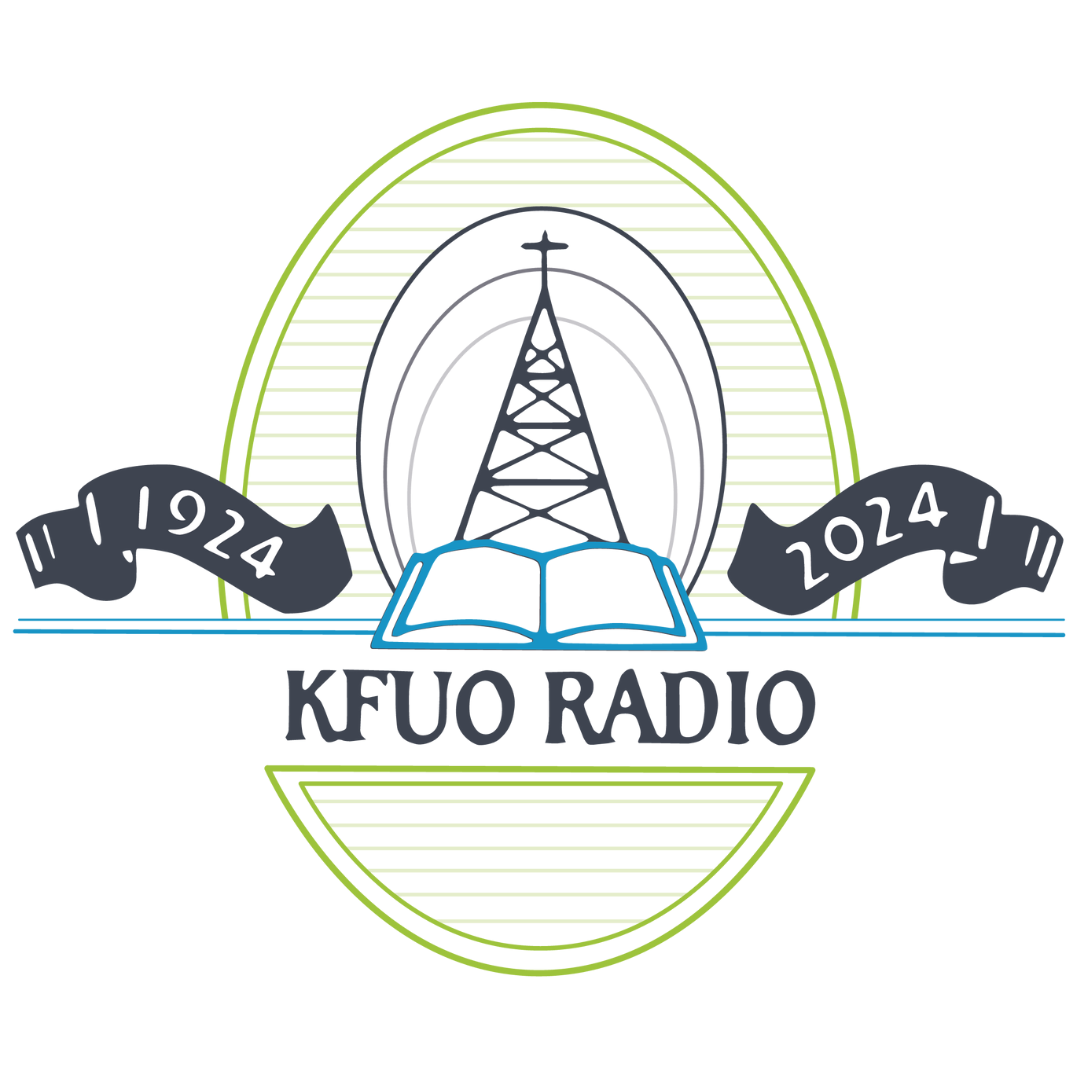The Idea to use Radio to Spread the Gospel
Radio Station KFUO, owned and operated by the Synod, was officially dedicated to the service of the Triune God on December 14, 1924, during an evening progress broadcast from an attic studio 9:15 to 11:00 p.m.
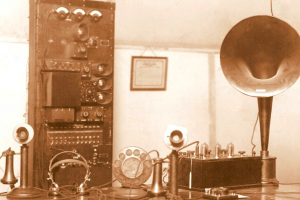
The idea for such a station grew out of the emergence of radio as a potentially powerful medium of mass communication following World War I. Prior to that time, radio (‘wireless’, as it was called) had been used largely for the communication of ship-to-shore messages. However, with the beginning of the ’20’s, several existing stations began to develop daily programs on the air, many with the emphasis on musical entertainment and news. The broadcast of the election results at the conclusion of the Harding-Cox Presidential campaign seemed to give additional impetus to public interest in radio broadcasting. Investors interested in developing radio as an advertising medium, began to establish new stations or buy existing facilities. The Federal Government found it necessary to establish additional regulations concerning the licensing and operation of broadcasting stations. By March of 1923, there were 556 radio stations licensed in the United States. The purchase of radio receiving sets seemed to keep pace with the increase in stations.
This Radio Enlightenment had not been overlooked by certain members of the Board of Control of Concordia Seminary, St. Louis. It was on Monday, February 19, 1923, at a meeting of the Board that its Chairman, the Rev. Richard Kretzschmar, under the heading of new business, advocated the erection of a broadcasting station either at the Seminary or at the Concordia Publishing House. The suggestion was discussed at length by members of the Board and it was resolved to bring this matter to the attention of the Board of Directors of the Lutheran Laymen’s League, who were scheduled to meet at St. Louis the following week, and to ask them for their support.
Having heard the request of the Board of Control, the League concurred in the idea and resolved to give its support. Dedicated members present at the meeting pledged a total of $2,285. Later the St. Louis Lutheran Publicity Association appropriated $1,000 for maintenance and up-keep, which subsidy was granted in subsequent years. The students of Concordia Seminary, besides raising $1,500 from donations from friends and relatives, also appropriated $1,000 from the students’ treasury. By the end of May, the radio fund had reached the sum of $7,000.
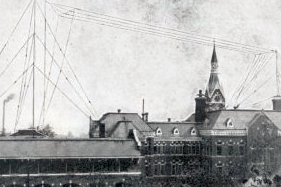
Estimates of the costs of installing a broadcasting station reached a total of approximately $14,000. Upon the request of the Seminary Board, the Walther League voted an appropriation of $7,000 for the project so that it could become a reality. Contracts for equipment and installation were then signed and work on the new station began in the attic of the old Seminary on South Jefferson Avenue in St. Louis. Such was the beginning of Station KFUO which officially went on the air and formally dedicated on December 14, 1924.
The United States federal government began licensing radio stations in 1912, and from the beginning had assigned call letters starting with K and W to commercial and broadcasting stations. Stations west of the Mississippi were assigned K— call letters, while W— call letters were issued to stations east of the Mississippi. The broadcasting station call letters K F U O were assigned by the federal government to the current project and later giving the slogan “Keeping Forward, Upward, and Onward”.
Among those closely identified with the conception and inauguration of the Station and to be designated as founders of KFUO were the Rev. Prof. J.H.C. Fritz, the Rev. Richard Kretzschmar, and the Rev. Dr. Walter A. Maier.
On the Air
When KFUO first went on the air, only two programs were broadcast each week, on Sundays and Wednesdays, at 9:15 p.m. Time on the air was soon extended, however, as more programs were added. Other events concurrent with station expansion were the calling of the Rev. Herman H. Hohenstein as director in 1925, and the resolution of the Lutheran Laymen’s League to finance the costs of increased station upkeep to the extent of $7,000 per annum.
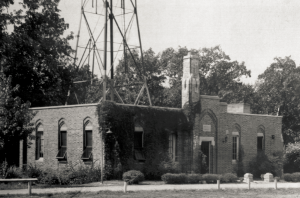
The removal of Concordia Seminary from its location on Jefferson Avenue in South St. Louis to the new campus property in suburban Clayton in 1926 also brought about the relocation of KFUO to Clayton. But not before the problem of housing the radio facility had been solved by approaching the Lutheran Laymen’s League which, by resolution, offered to re-build and provide annual maintenance for KFUO at the new Seminary site. The explicit understanding was the $50,000 would be required for the new station and new equipment, and an annual sum of $20,000 to $25,000 for operations. An additional resolution by the Lutheran Laymen’s League submitted to the Synod, assembled in St. Louis, on Wednesday, June 15, 1926, was as follows:
“Resolved: That Synod take over the station and gratefully accept the proposition of the Lutheran Laymen’s League to supply all necessary funds for its removal to the new Seminary, and its maintenance in the future, and that the control of the Station be placed in the hands of the Board of Control of Concordia Seminary.”Thus, KFUO became a Synodical enterprise.
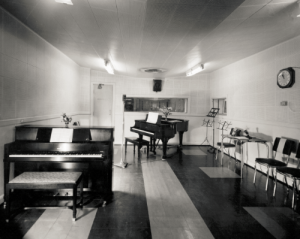
The growth of KFUO, from the date of dedication of the newly-located facility and its 1,000 watt transmitter on Sunday, May 29, 1927 is marked through succeeding years by a number of significant and noteworthy events.
Among these was the expansion of time on the air from only two programs a week in 1924 to thirty four programs a week, involving some 21 hours, by 1928. Moreover, during this period a policy was articulated which affirmed the station’s abiding interest in cultural, civic, and educational programming as being compatible with its primary purpose of Gospel broadcasting.
KFUO-KSD Case of the 1930’s
The KFUO years proceeding 1940 were characterized by a number of persistent frustrations but were also enlivened by several stimulating encouragements. Except for a brief interval during this period, KFUO shared the frequency of 550 kilocycles (kHz, or which would today be referred to as 550 on the AM Dial) with Radio Station KSD, owned by the St. Louis Post-Dispatch. Since both KFUO and KSD were operating on the same frequency, it was necessary that the two stations operate harmoniously. However, the relationship experienced difficulty from time to time over the matter of broadcasting schedules of the two stations (KSD 80% of broadcast time, KFUO 20%). At a hearing before the Federal Communications Commission Examiner in September of 1936, KSD sought to convince the authorities that KFUO should be taken off the 550 kHz frequency so that KSD might broadcast full time on this frequency and not have to share it with KFUO. Just previous to this, KFUO had applied for an increase in power to 5,000 watts and for use of half time on the 550 kilocycle frequency.
In the middle of this controversy, St. Louis Star-Times publisher Elzey Roberts attempted to buy the station for $100,000, according to research by St. Louis media historian Frank Absher. The church turned down the offer. Roberts turned to Columbia where he bought station KFRU and subsequently put St. Louis station KXOK on the air.
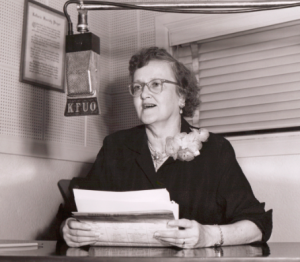 In March of 1938, the Commission handed down its decision in the long drawn-out KFUO-KSD case. The decision denied both applications of KSD for the facilities of KFUO, and also for KFUO’s application for more power and more hours. KFUO appealed the Commission’s decision. The Court of Appeals of the District of Columbia, however, after hearing arguments in the case, affirmed the Commission’s decision in 1939. Soon thereafter, KFUO resolved to apply for a new frequency on 830 kHz and for an increase in power to 5,000 watts. This was subsequently approved in November of 1940 and permission was granted to install the 5,000 watt transmitter. A few months later the frequency of KFUO was shifted from 830 to 850 kHz (where it continues to broadcast on the AM dial today). KFUO also still operated on “limited time”, meaning it could only broadcast from local sunrise to local sunset of Denver, Colorado. The station, to this day, is still one of the few remaining that operates in this manner. Thus was the dilemma of this era solved.
In March of 1938, the Commission handed down its decision in the long drawn-out KFUO-KSD case. The decision denied both applications of KSD for the facilities of KFUO, and also for KFUO’s application for more power and more hours. KFUO appealed the Commission’s decision. The Court of Appeals of the District of Columbia, however, after hearing arguments in the case, affirmed the Commission’s decision in 1939. Soon thereafter, KFUO resolved to apply for a new frequency on 830 kHz and for an increase in power to 5,000 watts. This was subsequently approved in November of 1940 and permission was granted to install the 5,000 watt transmitter. A few months later the frequency of KFUO was shifted from 830 to 850 kHz (where it continues to broadcast on the AM dial today). KFUO also still operated on “limited time”, meaning it could only broadcast from local sunrise to local sunset of Denver, Colorado. The station, to this day, is still one of the few remaining that operates in this manner. Thus was the dilemma of this era solved.
Continuing Growth of KFUO in the 1930’s and 1940’s
The bright contrast of this struggle over broadcast hours, frequency, and transmitting power was the inception and almost miraculous growth of The Lutheran Hour. The project, while not an integral part of KFUO, had its beginning with the Radio Committee of KFUO and grew out of a suggestion that effort be made to secure a “Lutheran Hour” over one of the coast-to-coast networks.
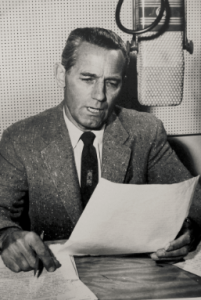 Having contact with major networks with regard to this possibility, Dr. Walter A. Maier reported favorable consideration with the Columbia Broadcasting System (CBS). The KFUO Radio Committee resolved to place the matter into the hands of the Lutheran Laymen’s League. In May of 1930, the League agreed to sponsor a weekly national Lutheran Radio Hour over the CBS. The first program of the Lutheran Hour was broadcast on Thursday, October 2, 1930 at 9:00 p.m., originating from KMOX in St. Louis and broadcast over 31 stations. The project continued until June of 1931 when it was discontinued because of (a) lack of funds and (b) a change in policy regarding religious broadcasting by the CBS.
Having contact with major networks with regard to this possibility, Dr. Walter A. Maier reported favorable consideration with the Columbia Broadcasting System (CBS). The KFUO Radio Committee resolved to place the matter into the hands of the Lutheran Laymen’s League. In May of 1930, the League agreed to sponsor a weekly national Lutheran Radio Hour over the CBS. The first program of the Lutheran Hour was broadcast on Thursday, October 2, 1930 at 9:00 p.m., originating from KMOX in St. Louis and broadcast over 31 stations. The project continued until June of 1931 when it was discontinued because of (a) lack of funds and (b) a change in policy regarding religious broadcasting by the CBS.
In 1935, the Lutheran Hour was revived over a small group of stations for a period from February until May, with the Dr. Walter S. Maier as speaker. Plans were then made for resumption of the broadcast for a season beginning in October of 1935 and extending to April of 1936, with KFUO as the originating station. In subsequent years, under the blessing of Almighty God and with the support of many dedicated friends, the Lutheran Hour, under sponsorship of the Lutheran Laymen’s League, continued to expand its ministry of ‘Bringing Christ to the Nations’.
The continuing growth and expanding ministry of KFUO, since its inception in 1924, had been financed largely by voluntary contributions from individuals, congregations, and organizations and without any regular subsidy. The Station retained its non-commercial status, thus deriving no revenue from advertising.
The Extension Service of KFUO and Syndication of Programs
At an observance of the 30th Anniversary of KFUO in 1934, some plans for reorganization of the Station’s work were announced. Dr. H.H. Hohenstein, the Station’s first director, became supervisor of the newly created KFUO Extension Service, a post he held until his death in 1961. Mr. Emerson Russell, a St. Louis advertising executive, was appointed General Manager of KFUO.
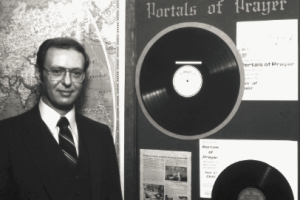
The new Extension Service of KFUO was designed to produce and distribute religious radio and television program materials, both scripted and recorded, for use by parish pastors over stations in their own localities. Distribution and use of these materials had been on a Synod-wide basis, involving also many foreign mission fields.
In 1956, KFUO, with the permission and cooperation of Concordia Publishing house, announced plans to produce a recorded version of Portals of Prayer for distribution to other radio stations. By February of 1957, a total of 200 stations were broadcasting the 2-minute devotional program daily. Ten years later in 1967, the Gospel feature was being distributed to a total of 800 outlets, including more that 700 stations, also hospitals, nursing homes, prisons, other institutions and schools. Station officials estimated a total audience of over 50 million listeners each week. The Portals of Prayer message was broadcast to 5 continents, proclaiming Christ as Savior. KFUO continued to provide this service until 2013.
A Sister Station
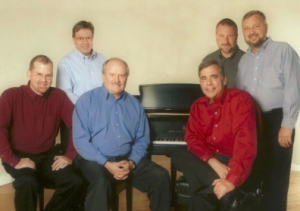
The voluntary support had sustained the station through several building enlargement programs and significant improvements of its technical equipment. An FM broadcast facility was added in 1948 and both AM and FM outlets simulcast the same programming until 1975, when the Federal Communications Commission decided that the two channels should have different content. The FM station became CLASSIC99, playing classical music, while the AM station focused on talk, interview, and worship music programming. CLASSIC99 was among the oldest FM stations west of the Mississippi River and eventually moved to a commercial format which allowed them to generate revenue through advertisement on the air. KFUO-FM was sold to Gateway Creative Broadcasting in March of 2010 (and approved by the FCC in May). CLASSIC99 ended its 62-year classical music format at 10:00 PM on July 6, 2010.
The Lutheran Church–Missouri Synod v. FCC
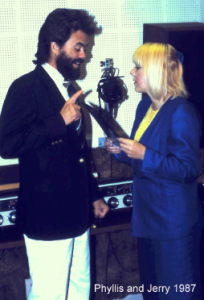
Lutheran Church–Missouri Synod v. FCC was a 1998 U.S. Court of Appeals case involving the Federal Communications Commission’s (FCC) enforcement of the Equal Employment Opportunity Act and the Fifth Amendment. The FCC claimed that The Lutheran Church–Missouri Synod had violated the FCC’s Equal Employment Opportunity requirements by not hiring enough minorities/women and by requiring a knowledge of Lutheran doctrine in order to be hired to work at its two FM and AM radio stations located in Clayton, Missouri.
In 1995, the NAACP challenged the license renewal of KFUO-AM/FM (the FM is a commercial classical music station) for lack of efforts in recruiting and hiring minority employees. In 1996, the FCC fined the stations and gave them a one-year renewal. KFUO subsequently challenged the FCC’s action in the U.S. Court of Appeals for the District of Columbia. The court not only overturned the FCC’s fine, it threw out the Commission’s 30-year-old affirmative action policies in a ruling on April 14, 1998. On September 16, the court refused to hear an appeal of its decision.
A Worldwide Outreach
KFUO-AM officially launched its Web site, www.kfuo.org, in 1998, offering listeners a live audio stream of its broadcast. In 2004, KFUO-AM made another digital leap by launching its HD station, the first in Missouri.
A New Studio
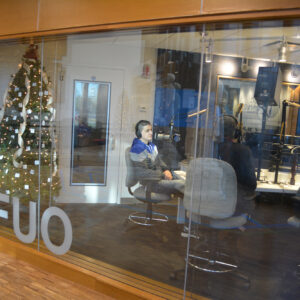
On June 24, 2013, KFUO, the broadcast ministry of the LCMS moved from its studios at Concordia Seminary, St. Louis, in Clayton –where it has been broadcasting since 1927– and began broadcasting from the LCMS International Center in Kirkwood, Missouri.
The new studios were necessary because the seminary location was aging and becomingly increasingly difficult to maintain. Synod executives also wanted to bring the station closer to the LCMS ministries so staff members and visitors could be more readily available for on-air interviews, thereby making listeners worldwide aware of how the LCMS and its partners are sharing the Gospel.
With 90 consecutive years of service, KFUO is the longest continually owned-operated religious broadcast station in the world, and maintains its mission of sharing the Gospel of Jesus Christ both on AM (850) and Worldwide at www.kfuo.org
